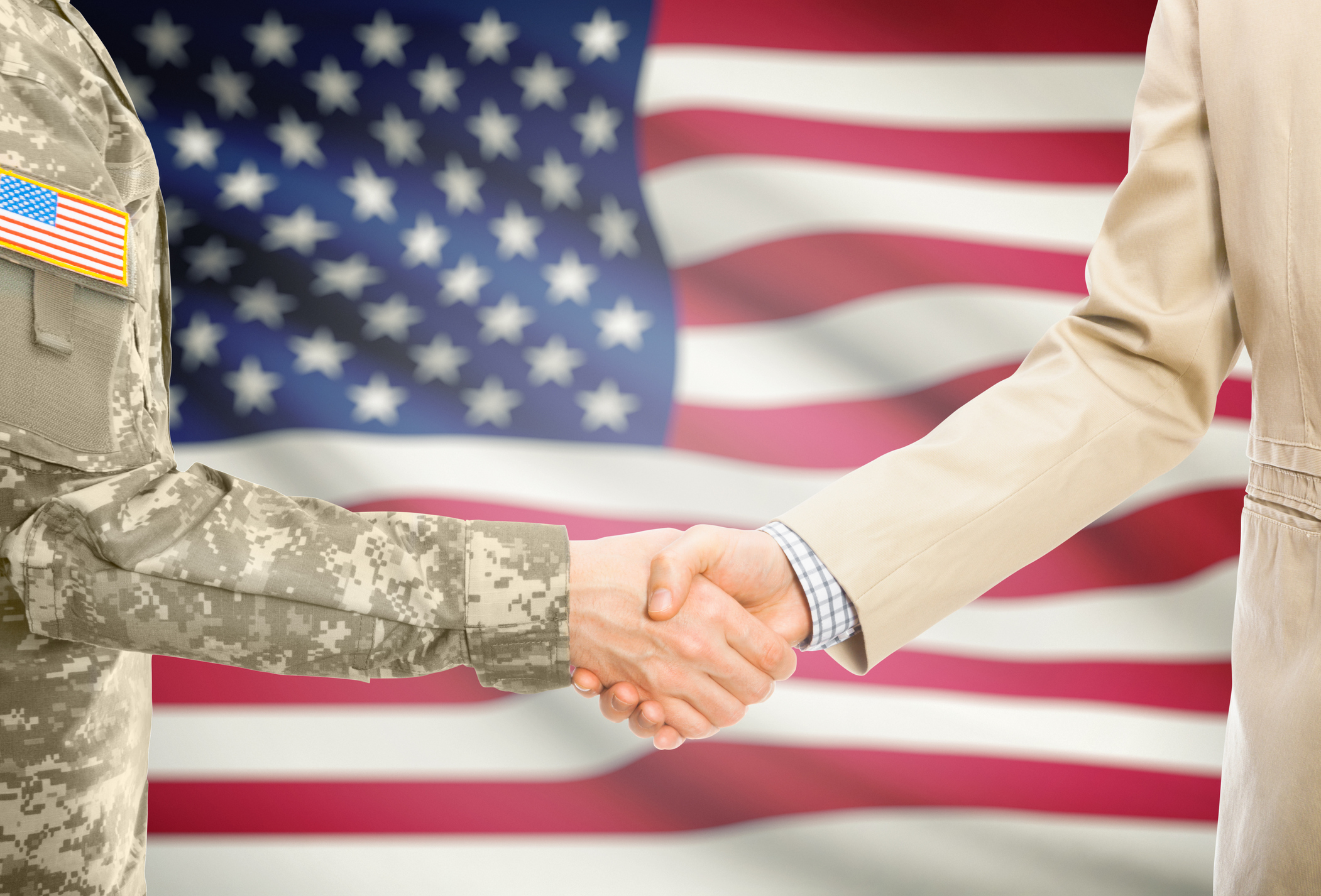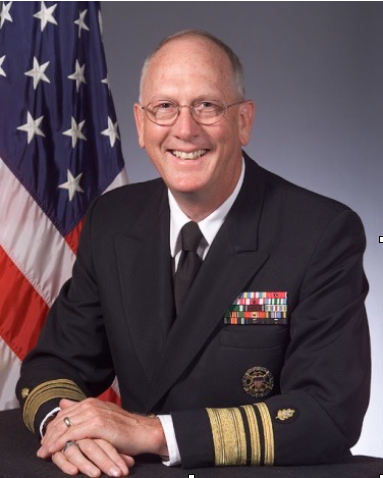
The 126th annual AMSUS educational meeting is scheduled later this month from Nov. 28 to Dec. 1, 2017, at Maryland’s Gaylord National Harbor. As I and the AMSUS staff finalize our last-minute preparations, it set me to thinking about the changing nature of professional meetings and, indeed, human interactions in general. AMSUS, the Society of Federal Health Professionals, was originally formed in 1891 as the Association of Military Surgeons of the United States by the Surgeons General of the then 46 states. The annual meeting has brought military, U.S. Public Health Service, Veterans Administration (VA) and other health professionals together to learn about the latest developments in medicine while strengthening professional relationships and networks.
In those earliest days, one had to be highly committed to get his or herself to a national meeting. There were no cars or planes. A traveler would have travelled by horseback, horse-drawn carriage or steam powered railroad. Travel was slow, difficult and uncomfortable. Fast forward to current times: Meeting attendees are whisked to the meeting site over paved roads or through air in a relative heartbeat. San Francisco to New York City, five hours or so . . .
So, isn’t it ironic that physical, face-to-face meetings are declining? The recent development of sophisticated communications electronics has enabled distant conversations, fostering the belief that business can be managed remotely. But I don’t think that squares with reality. A great deal of business still requires the personal touch. Humans are still social animals, and personal contact cannot be done by Skype or any other technological platform, no matter how ingenious.
The famous social biologist E.O. Wilson once wrote to the effect that people “have Stone Age brains, living with medieval institutions, trying to deal with almost God-like technology.” We have not had enough time to evolve significantly from our ancient ancestors. We are not smarter than cave men. Our institutions would be instantly recognizable by the Doges of Venice, and our technology is so complex that few really understand its workings. Further, as social animals, it is said that we communicate far more with our gestures, body language and tone of voice than with our words. Phone calls and video conferences cannot adequately convey those complexities. We still need to shake hands and look into one another’s eyes to communicate fully and effectively.
Certainly technology facilitates many of our transactions. Technical questions or relatively straightforward and routine matters are all opportunities for telecommunications, conference calls and e-mail communications. And I would never argue that electronic communications have made our lives worse; quite the contrary. Thinking back on productivity in my office during the days of typewriters, copy paper, mimeograph machines, mail with postage stamps that takes days to arrive rather than milliseconds for e-mail, it’s amazing that we got anything done at all.
Comparing that era to today’s lightning quick text messages and e-mails with almost unlimited file sharing is like comparing the pre-combustion engine travel era of carriages and steam locomotives. Were we to go back to those days, it would feel something like going into the office to have root canals performed every day. Even when I catch myself complaining that my Outlook inbox is a tyrant that runs my life and drives me crazy, I still know deep in my heart how much better off I am.
On the other hand, let me use an upcoming event to illustrate how important the personal still is: At the annual AMSUS meeting there is a Banquet and Awards Ceremony where the best individual and unit performances of the year for military, Public Health Service and VA professionals are recognized. These are highly prestigious and much recognized awards because candidates are nominated by their peers in a highly competitive process. The uniform for the banquet is “mess dress” or equivalent. For military that is the tuxedo equivalent uniform, and the room is full of officers resplendent in their best uniforms proudly bearing their medals earned in a career of service. Medical officers from 20-30 nations are always in attendance, providing a martial splendor you rarely see.
Each award recipient is called individually to the stage where his Surgeon General or Agency Chief presents the award along with the usual “grip and grin” handshake and picture. For young professionals who have never seen a senior officer of that rank, it’s a heady experience. For all recipients, it’s a warm feeling knowing that not just someone noticed your efforts but everyone noticed. (We all claim we don’t care what others think, and we don’t work for the approbation of anyone but ourselves. Research in clinical psychology tells us otherwise. We care a lot.)
Now imagine that AMSUS continues its awards program next year, but, to save travel money, we’ll just acknowledge awardees electronically. Perhaps we will send a text message or nice e-mail and an attached file with the Certificate of Award (electronically signed.) Oh, and we will cc: the recipients’ bosses for awareness. The plaque that comes with the award can’t be sent electronically, so we’ll decide whether to mail it or send a gift certificate as another attachment so the recipient can go to the local trophy store and buy one for him/herself. To add that thoughtful personal touch, we will ask their Surgeons General to give them a call to say “congratulations.” How much would that mean to the recipients? Not a lot.
There is another interesting aspect to consider: Neurobiologists who study brain wave patterns have discovered that the neural pathways we use differ depending on how we are learning. Nicholas Carr, in “The Shallows: How the Internet is Changing our Brains,” compares learning from books to seeking information on the Internet. The neural pathways are totally different. He provides no opinion on whether one pathway is “better” than another, but they are simply substantially different. Our electronics are changing us in fundamental ways that we don’t yet understand.
I don’t know if the neural pathways are different between listening to a lecture in person and a teleconference, but I would not be surprised if they are. Medicine is a complex undertaking and not all science-driven. Much of practice is “heuristic.” We all are comforted by the myth that medicine equals science but that’s not entirely true. As much as doctors and nurses try to make the practice of medicine “evidence-based,” meaning rigorously scientifically proven, much of it is still not. A great deal of medicine is the art of doing what seems to work. In the course of the ages, physicians find – through trial and error – practices that work and others that don’t. The latter are abandoned while the former are communicated to others who spread the word on. Aspirin has never gone through a clinical trial to “prove” that it effectively decreases pain. Digitalis has never been “proven” to strengthen heart contractions. Both drugs were discovered heuristically and have been mainstays of medicine for generations.
The reality of medicine as an art is reflected in our language. We say a physician “practices the art of medicine.” Compare that to a scientist who “performs the science of research.” As long as medicine remains an art, we need human interactions – face-to-face, up close and personal – to advance the art. I look forward to our upcoming AMSUS event (go to www.amsus.org for more information). I hope to see you there, dear reader. Maybe we will have a cup of coffee and find a cure for something . . .

